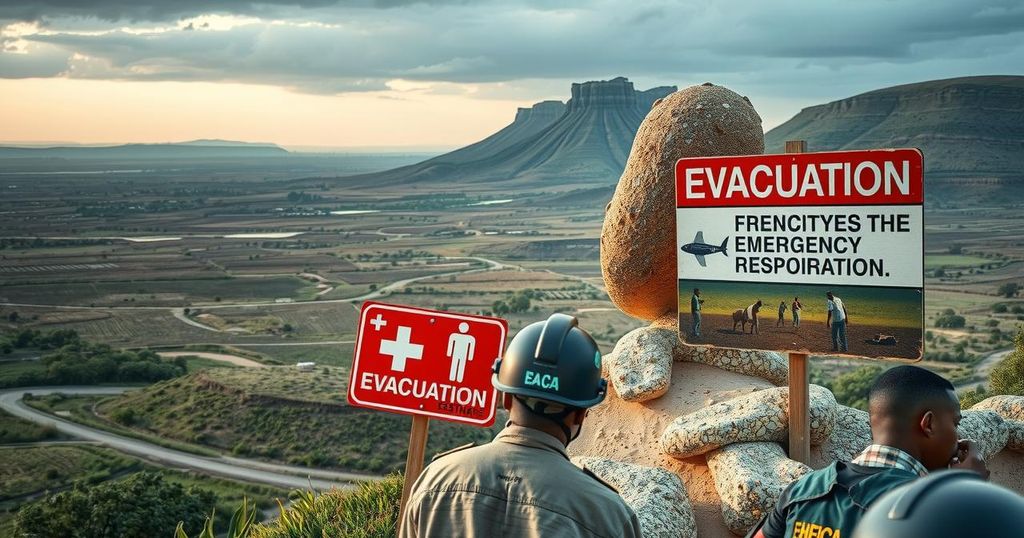Ethiopia Evacuates 80,000 Amid Rising Earthquake Fears and Volcanic Threats

Ethiopia is evacuating approximately 80,000 people due to a series of earthquakes and potential volcanic activity in the Afar, Oromia, and Amhara regions. The government is monitoring the situation closely while assessing damage and implementing safety measures for residents in affected areas. Concerns about the structural integrity of buildings in urban areas have been raised, prompting calls for infrastructure improvements.
The Ethiopian government is in the process of evacuating approximately 80,000 citizens in response to a series of significant earthquakes that have recently struck the Afar, Oromia, and Amhara regions. These seismic events, which include at least ten earthquakes recorded since Friday, have raised concerns about potential volcanic activity, particularly in the Awash Fentale district. The United States Geological Survey documented a strong quake with a magnitude of 5.8 early Saturday, causing tremors that were felt widely, even in the capital city, Addis Ababa.
As reports indicate, the quakes have resulted in damaged homes, although no fatalities have been reported thus far. The Ethiopian authorities have been vigilant in monitoring the situation, especially following the appearance of smoke from vents in the Dofen volcano, signaling the possibility of volcanic eruptions. The government has deployed emergency responders to assess and manage the situation across twelve districts while prioritizing the safety of the most vulnerable populations among the affected citizens.
Ethiopia has experienced a persistent frequency of seismic activity, with numerous aftershocks following the initial tremors. Local residents have expressed their fear, with many choosing to sleep outside due to the instability. Experts warn that many buildings, particularly in urban centers like Addis Ababa, are inadequately designed to withstand such seismic events, due to outdated construction codes and insufficient adherence to building standards. Additionally, engineers and officials are actively working on enhancement plans to better fortify infrastructure against future earthquakes.
The Ethiopian Disaster Risk Management Commission highlighted that over 51,000 individuals in the Afar and Oromia regions are at heightened risk due to recent earthquakes, and efforts are ongoing to secure safer locations for these residents. Authorities are diligently assessing the overall impacts of these earthquakes on both the social and economic frameworks of the regions affected. As the government continues to closely monitor these seismic threats, safety precautions are being reinforced to better protect the populace.
The evacuation of citizens in Ethiopia is largely a precautionary measure amid increased seismic activity and concerns over volcanic eruptions. The earthquakes have highlighted significant vulnerabilities in building standards and urban infrastructure, with many structures in urban areas such as Addis Ababa poorly equipped to endure such natural disasters. Moreover, the motives behind the evacuations involve proactively safeguarding vulnerable communities while assessing the broader implications of seismic hazards on both life and property.
In summary, the recent earthquake activity in Ethiopia has necessitated the evacuation of thousands to ensure their safety due to fears of volcanic eruptions and further seismic events. The government is taking steps to monitor the situation closely and assess its impact, while addressing the critical need for stringent building regulations and readiness to safeguard communities against future earthquakes. It is clear that Ethiopia’s urban infrastructure requires urgent upgrades to prevent potential disaster in the face of geological threats.
Original Source: www.voanews.com








